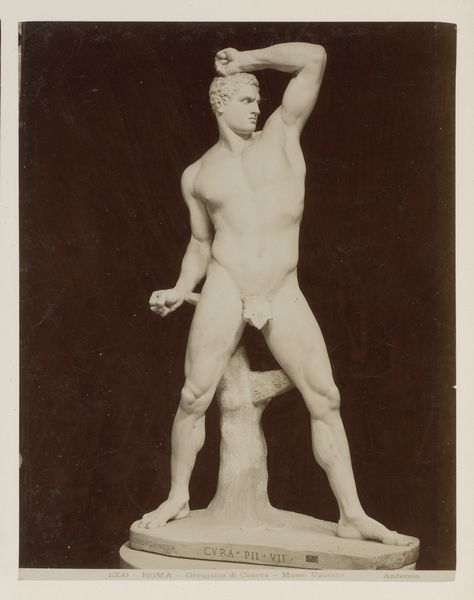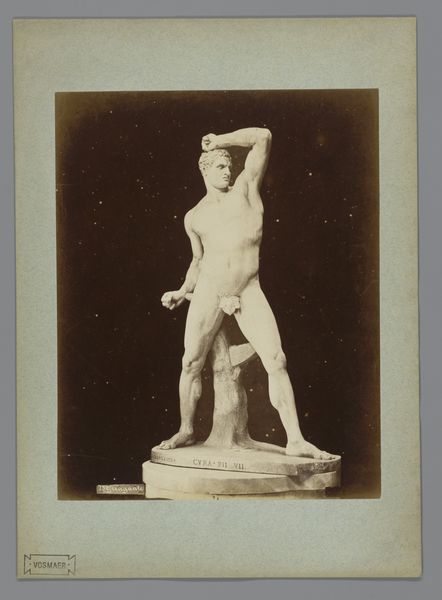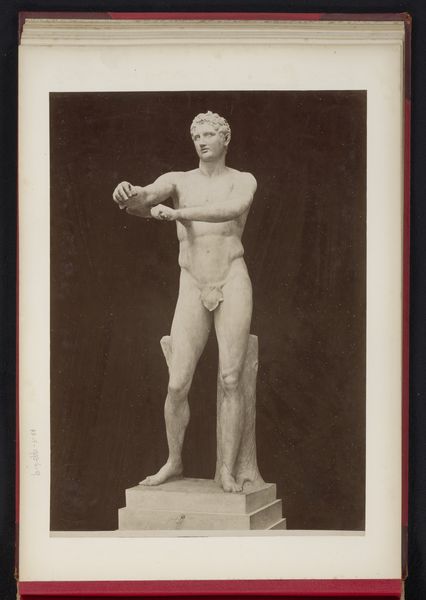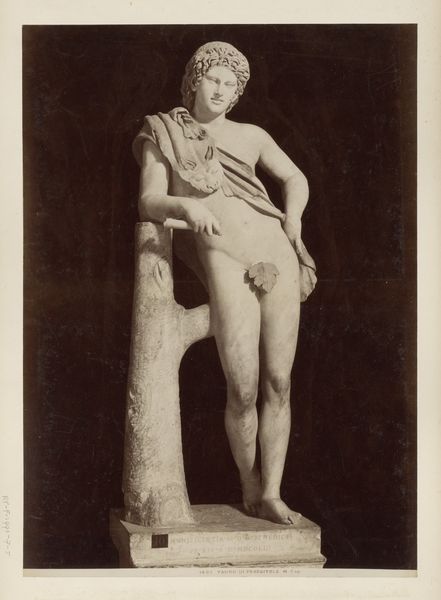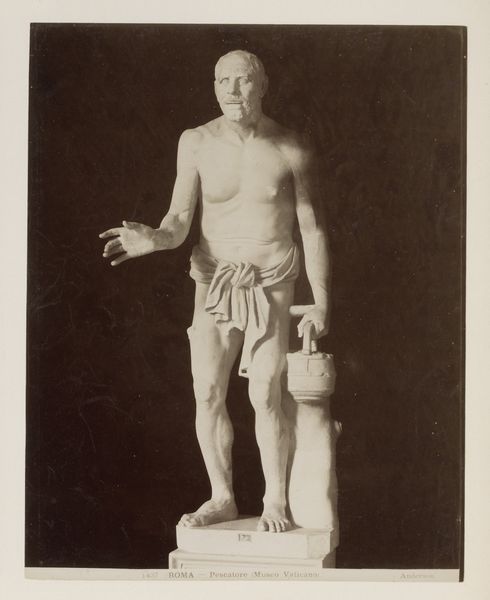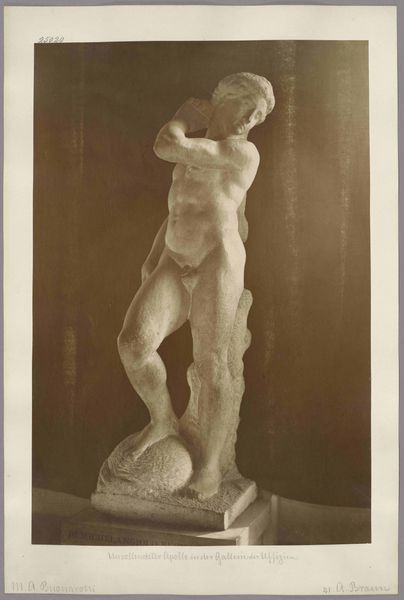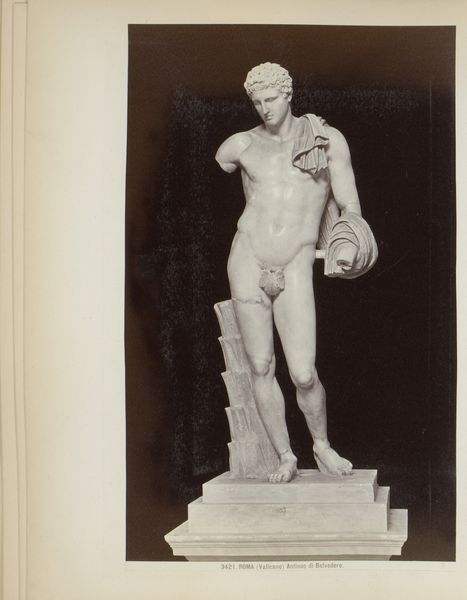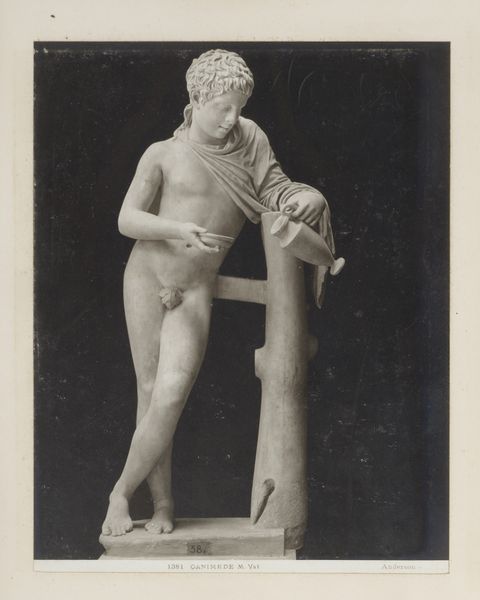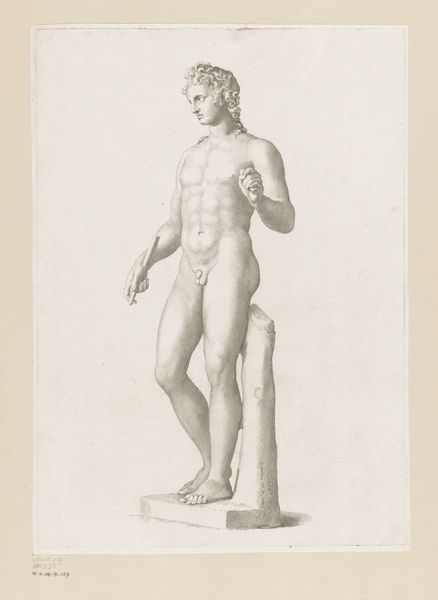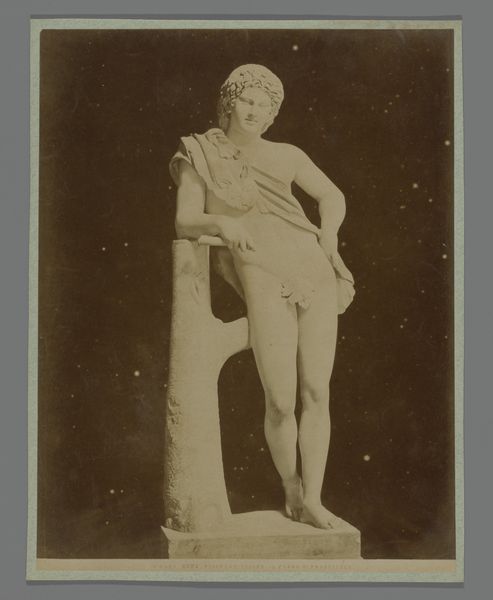
sculpture, marble
#
greek-and-roman-art
#
classical-realism
#
figuration
#
ancient-mediterranean
#
sculpture
#
academic-art
#
charcoal
#
marble
#
nude
Dimensions: height 259 mm, width 202 mm
Copyright: Rijks Museum: Open Domain
Editor: Here we have "Sculpture of Damoxenos, Vatican," made between 1857 and 1875. It’s currently held at the Rijksmuseum and seems to be crafted from marble. It depicts a nude male figure, classically rendered, but also feels… staged. How do you interpret this work, especially considering its historical context? Curator: The marble itself is a key point. Think about the quarrying, the labor involved in extracting and transporting that stone, then shaping it. The artist, James Anderson, through his photography, isn't just presenting a classical ideal. He's participating in a larger industry that commodifies and circulates these images. This circulation reinforces certain notions about beauty, masculinity, and power, doesn't it? Editor: So it's not just about the ideal form, but about the process that creates and disseminates that ideal? The labor behind the photograph is often invisible. Curator: Exactly. Consider the staging, the props - even the "classical" tree trunk provides support. What's supporting what, physically and metaphorically? And how does this image become a product itself, available for consumption and replication? It makes you question, doesn’t it, the very idea of a singular, 'original' artwork. Editor: I never really thought of the circulation of images that way, as reinforcing specific ideas. It opens a new perspective on the social role and responsibility of photography in museums. Thank you! Curator: Indeed. Considering these processes behind the artwork makes one see how art becomes implicated in power structures. It's something to consider further!
Comments
No comments
Be the first to comment and join the conversation on the ultimate creative platform.
